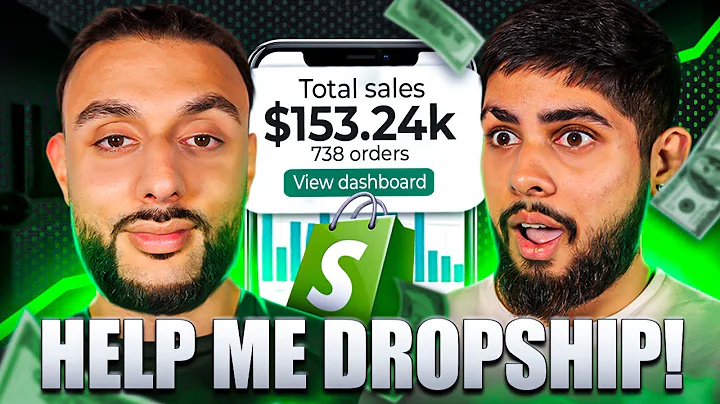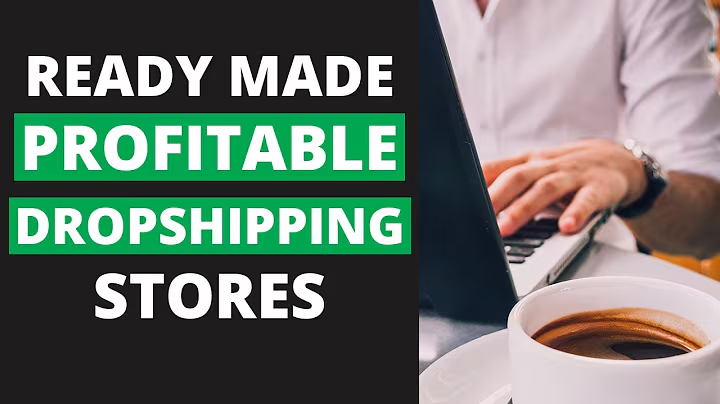Choosing the Best: Shopify Dropshipping or Print On Demand
Table of Contents
- Introduction
- Understanding Shopify dropshipping
- Definition of Dropshipping
- Pros of Shopify Dropshipping
- Cons of Shopify Dropshipping
- Understanding Shopify Print on Demand
- Definition of Print on Demand
- Pros of Shopify Print on Demand
- Cons of Shopify Print on Demand
- Comparison: Shopify Dropshipping vs Shopify Print on Demand
- Factors to Consider
- Which Model is Better?
- Conclusion
Shopify Dropshipping vs Shopify Print on Demand: Which Model is Better?
In the world of e-commerce, two popular business models have emerged: Shopify dropshipping and Shopify print on demand. If you're new to the e-commerce game, you may be wondering which model is better suited for you. In this article, we'll break down the pros and cons of both models and help you make an informed decision.
1. Understanding Shopify Dropshipping
Definition of Dropshipping
Dropshipping is a business model that allows you to sell products without having to hold inventory or fulfill orders yourself. Instead, you partner with a supplier who handles the inventory and shipping process. When a customer places an order on your online store, the supplier ships the product directly to the customer.
Pros of Shopify Dropshipping
- No inventory management: With dropshipping, you don't have to invest in and store inventory. This means you won't tie up your capital in stocking products.
- Lower upfront costs: Dropshipping requires minimal investment compared to traditional retail businesses. You don't have to purchase products upfront or pay for manufacturing.
- Easy to get started: Dropshipping eliminates the need for complex logistics. You can quickly set up an online store and start selling products.
- Product variety: Dropshipping allows you to offer a wide range of products from different suppliers. You can test multiple products and find profitable niches.
Cons of Shopify Dropshipping
- Longer shipping times: Dropshipping from countries like China can result in longer shipping times, which can negatively impact customer satisfaction.
- Lack of control over inventory: Since you rely on suppliers, there is a risk of stockouts or low-quality products. Customer complaints and returns can be challenging to manage.
- Competitive market: Dropshipping has become popular, which means you could be selling the same products as many other stores. This can lead to increased competition and reduced profit margins.
2. Understanding Shopify Print on Demand
Definition of Print on Demand
Print on demand is a variation of the dropshipping model focused on custom-printed merchandise. With print on demand, you can sell products like t-shirts, hoodies, mugs, and more, each featuring your unique designs. When a customer places an order, the print on demand supplier prints and ships the item directly to the customer.
Pros of Shopify Print on Demand
- Quick shipping times: Print on demand products are usually produced and shipped locally, resulting in faster delivery times. This improves customer satisfaction and reduces potential returns.
- Unique products: With print on demand, you have the freedom to create your own unique designs and offer products that are exclusive to your business. This can help you stand out in a competitive market.
- Better branding opportunities: Print on demand allows you to customize packaging and include personalized notes, creating a more professional and branded experience for customers.
- Higher profit margins: Since you have control over the product pricing and design, print on demand can offer higher profit margins compared to traditional dropshipping.
Cons of Shopify Print on Demand
- Limited product options: While print on demand offers a variety of products, it may not have the same extensive product range as traditional dropshipping. However, there are still hundreds of options available for customization.
- Design requirements: To be successful with print on demand, you need appealing and marketable designs. Creating unique and attractive designs may require additional skills or outsourcing.
3. Comparison: Shopify Dropshipping vs Shopify Print on Demand
When deciding between Shopify dropshipping and Shopify print on demand, several factors need consideration:
- Time and Effort: Dropshipping requires less upfront effort to set up, as you don't have to create custom designs. Print on demand requires more artistic input but offers unique branding opportunities.
- Investment: Both models have low investment requirements, but dropshipping may have slightly lower startup costs due to no design expenses.
- Shipping Times: Print on demand generally offers faster shipping times, enhancing customer satisfaction.
- Product Variety: Dropshipping allows for a wider range of products, while print on demand offers customization options for a more unique offering.
- Profit Margins: Dropshipping can potentially offer higher profit margins if you choose higher-priced products. However, print on demand allows for better control over pricing and branding.
Considering these factors, print on demand is often favored for its potential to create a more professional and unique business. However, the choice ultimately depends on your preferences and business goals.
4. Conclusion
In conclusion, both Shopify dropshipping and Shopify print on demand have their merits. However, if you're looking to build a professional, branded business with unique products, print on demand may be the better option. With faster shipping times, better branding opportunities, and higher profit margins, print on demand offers numerous advantages over traditional dropshipping. Ultimately, your choice should align with your business goals and the level of effort you're willing to invest.
Highlights
- Shopify dropshipping allows selling products without inventory, while Shopify print on demand focuses on custom-printed merchandise.
- Both models have pros and cons, including lower upfront costs, quick execution, and the potential for higher profit margins.
- Print on demand offers faster shipping times, unique products with branding opportunities, and better support.
- Dropshipping allows for a wider range of products but often faces longer shipping times and increased competition.
- Choosing between the two models depends on factors such as time and effort, investment, shipping times, product variety, and profit margins.
- Print on demand is favored for its potential to create a professional, branded business with unique offerings.
Frequently Asked Questions (FAQ)
Q: Is dropshipping more profitable than print on demand?
A: Profitability depends on various factors such as product selection, marketing strategies, and customer demand. While dropshipping can offer higher profit margins for certain products, print on demand allows for better control over pricing and branding.
Q: Can I combine dropshipping and print on demand?
A: Yes, it is possible to combine both models. Some entrepreneurs offer a mix of dropshipped products and custom-printed merchandise through print on demand. This allows for diversification and the ability to cater to different customer preferences.
Q: What skills are required for print on demand success?
A: To succeed in print on demand, you need creative skills for designing or outsourcing appealing graphics. Basic knowledge of e-commerce and marketing is also beneficial for promoting your unique products effectively.
Q: Can I switch from dropshipping to print on demand or vice versa?
A: Yes, it is possible to switch between the two models. Many entrepreneurs pivot their businesses based on market trends, profitability, or personal preferences. Transitioning requires careful planning, including product selection, supplier sourcing, and adjusting marketing strategies.



















